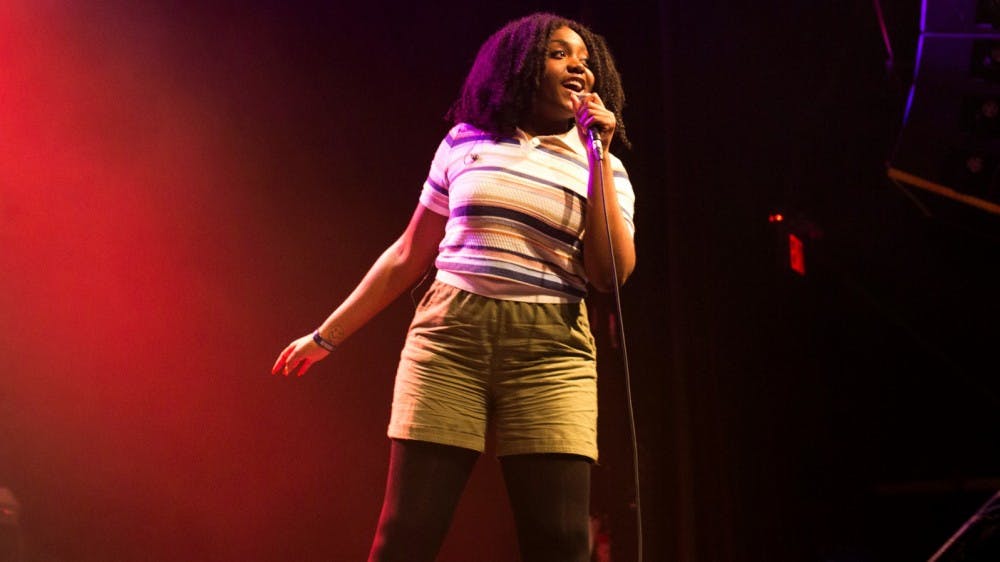“Chano, Chatham’s own,” Chance the Rapper pops with energy in the opening lines of the track, “Juice," off his second mixtape Acid Rap. Referring to himself as “Chano,” Chance gives tribute to West-Chatham, a neighborhood on the South Side of Chicago where he was born. In “Memories on 47th St.,” rapper Vic Mensa paints a picture of his younger self, as a boy who wants to take on the city of Chicago despite being surrounded by violence and racism growing up on Woodlawn and 47th street. The names don’t end there. Noname. Joey Purp. Saba. Mick Jenkins. Besides being rappers, all these artists have something else in common: they have their roots in Chicago. Over the last few years, Chicago’s music scene has given rise to a myriad of musical groups and artists, but why this particular city? What about it puts so many young rappers in the spotlight? Due to its cultural relevancy and tight–knit community, the Chicago music scene is made up of young artists to look out for in the near future.
Fatimah Nyeema Warner, otherwise called Noname, is a 25 year old female rapper best known for her album Telefone which was released in 2016. She grew up in a neighborhood called Bronzeville, located on Chicago’s South Side. When Noname was in high school, she often performed poetry at open mics and eventually ended up placing third in Chicago’s “Louder than a Bomb” slam poetry competition, which gained her local recognition. One day she was researching poetry opportunities in Chicago and stumbled upon YouMedia, a program run by the Chicago Public Library that connects teenagers through various creative projects designed for collaboration. There, she met Chance the Rapper, leading to her debut on his track, “Lost,” from Chance’s second mixtape, Acid Rap.
Noname’s experience integrating herself into the Chicago music scene seems standalone, but in fact, it’s not. Saba, a 24 year old rapper from Chicago’s West Side, was also involved at YouMedia Center, performing at open mics when he was just 16. In 2012, Saba spearheaded Pivot Gang, a hip-hop collective of Chicago based rappers. The group is comprised of ten artists including Saba, Joseph Chilliams, and John Walt, Saba’s cousin who recently passed away. Collaboration is the main component of what makes these Chicago rappers so successful. Saba was featured on Chance the Rapper’s song, “Everybody’s Something,” and Saba featured fellow Chicago hip hop artist Mick Jenkins in his first project, GETCOMFORTable. Much like Saba and Noname, Mick Jenkins had his beginnings doing open mics with Young Chicago Authors starting from age 17.
Even an artist as big as Chance the Rapper didn’t rise to fame alone. Spearheaded by rapper Vic Mensa, the collective SaveMoney includes more than twenty creatives including Chance the Rapper, Donnie Trumpet, Towkio, and Joey Purp. In an interview with Vice News, Donnie Trumpet described SaveMoney as “a group of people from Chicago … that had a like mind, that were all creative in their own way, and all had something to offer this world, and we all found each other by some kind of grace of God.” 2016 proved to be a big year for many of the artists in SaveMoney. Joey Purp released iiiDrops, which Pitchfork put under “Best New Music,” Vic Mensa released There’s a Lot Going On, and Towkio dropped Community Service 2 EP. In all of these albums, the element of collaboration cannot be ignored. Joey Purp’s iiiDrops features Chance the Rapper, Saba, Mick Jenkins, and Vic Mensa. Chance the Rapper’s Coloring Book has appearances from Saba, Towkio, and even the Chicago Children’s Choir.
From these stories, it becomes clear that Chicago has unparalleled opportunities for young artists. These opportunities eventually create a network of collaborators, producers, and musicians that support each other in their work, making the journey of creating music seem less cutthroat. Many of these artists have similar experiences in the way they built their careers starting from the local Chicago community, using their music as a platform to talk about the way Chicago has shaped their art. Diversifying the number of opportunities that allow young artists from all different backgrounds to perform enables them to build a network right from the get–go. Without those platforms, we might not have been able to witness the rise of some of today’s hottest up and coming artists.

